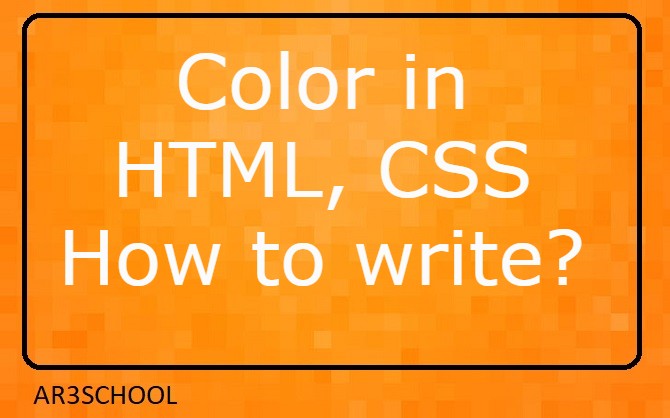Color in HTML, CSS How to write? Background Color, basic color, hexadecimal, RGB, Using Named Colors
Color is a fundamental aspect of web design and HTML. It adds visual appeal, helps convey information, and enhances the overall user experience. In this comprehensive guide, we'll explore various ways to apply color in HTML, including text color, background color, and how to specify colors using different methods.
Basic Text Color
Changing the color of the text is a common task in HTML. You can use the color property in CSS to define the text color for HTML elements. Here's how to set the text color to red:
<!DOCTYPE html>
<html>
<head>
<style>
.red-text {
color: red;
}
</style>
</head>
<body>
<p class="red-text">This text is red.</p>
</body>
</html>
Background Color
In addition to text color, you can also set the background color of HTML elements. Use the background-color property in CSS to achieve this:
<!DOCTYPE html>
<html>
<head>
<style>
.blue-bg {
background-color: blue;
color: white; /* Set text color for readability */
}
</style>
</head>
<body>
<div class="blue-bg">
<p>This text has a blue background.</p>
</div>
</body>
</html>
Using Named Colors
HTML and CSS support a set of named colors, such as "red," "blue," and "green." You can specify colors using these names, making it easier to work with:
<p style="color: blue;">This text is blue.</p>
Using Hexadecimal Colors
Hexadecimal colors are widely used in web design. They are specified using a combination of six characters (0-9 and A-F) and represent RGB values. For example, #FF0000 corresponds to red, #00FF00 to green, and #0000FF to blue. You can use them in your HTML and CSS like this:
<p style="color: #FF0000;">This text is red.</p>
Using RGB Colors
RGB (Red, Green, Blue) is another way to specify colors in HTML and CSS. It allows you to define colors using three values ranging from 0 to 255 for each channel. For example:
<p style="color: rgb(255, 0, 0);">This text is red.</p>
Using RGBA Colors
RGBA (Red, Green, Blue, Alpha) is an extension of RGB that includes an alpha channel for transparency. This allows you to create semi-transparent colors:
<p style="background-color: rgba(0, 0, 255, 0.5);">Semi-transparent blue background.</p>
CSS Color Properties
In addition to color and background-color, CSS offers other properties like border-color and outline-color to control color in various aspects of web design.
Conclusion
Understanding how to work with color in HTML and CSS is essential for web developers and designers. Whether you want to style text, create visually appealing backgrounds, or use complex color schemes, HTML and CSS provide various methods to help you achieve your design goals. Experiment with different color combinations to create eye-catching and user-friendly web experiences.

Comments :
Post a Comment